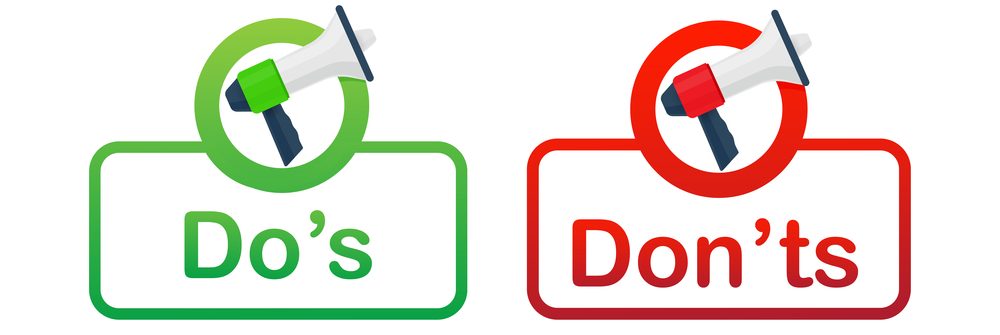
Let’s be honest. Press releases on their own aren’t going to save the planet, plant more hedgerows, or launch you into space.
The best press releases are all about great storytelling. Steve Jobs, the king of branding, knew the importance of story – he famously said: “The most powerful person in the world is the storyteller. The storyteller sets the vision, values, and agenda of an entire generation that is to come.”
Tell a compelling story that connects with your target audience. Media coverage will create a buzz around your brand, drive awareness, and increase web traffic. And here’s the best bit: it’s free!
It’s not an exact science, and there are many reasons why a press release may fail to land. You can’t control the news agenda, and on the day, breaking news may lead to your press release getting binned. But it’s important to have a grip on the variables you can control.
Basic mistakes can really hinder your chances of success.
As a former TV producer, I’ve worked in a few frenetically busy newsrooms in my time, and the most annoying thing was, you guessed it: badly timed, poorly framed, or hopelessly untargeted press releases that clogged up our inboxes. Typos drove us mad! Or no talking heads or storytellers available to interview.
Whether you’re a rookie or an expert with decades of experience, this blog offers a useful list of the top 15 common mistakes to avoid when writing a press release.

Sidestepping these common pitfalls won’t guarantee you press coverage – no press release can – but cutting out the mistakes can boost your chances of success:
- First and foremost, ask yourself: Is this a story? Many stories don’t land because they are simply not strong enough. So, be honest in assessing its newsworthiness. Before you put pen to paper, give this careful consideration. Don’t waste your – and a busy reporter’s – time with a weak story. Be creative and engaging. Find unique news hooks that spark the reader’s interest and will make them want to read on. For example: Survey findings are always popular news angles. Think about the ‘new’ in ‘news’. Does your story have shareability and talkabilty?
- Language is verbose and densely written. The press release is inflated and too long – content is boring; too much tick boxing; too many bullet points; jargon-filled and ill-constructed paragraphs that don’t flow. Resist the use of superlatives!!!!???@
- Don’t use AI to write your release. Be human and relatable. Plain language wins every time! People’s personal stories resonate with audiences, and storytellers will add a human face to your press release. It’s all about building connection and trust.
- Lazy opening paragraph that doesn’t hook the reader. Your opener needs to be a killer para that draws them in. Start with a bang and wow them early! Like any great story: there should be a beginning, middle, and end.
- Make sure your copy clearly sets out the 5 Ws: Who? What? Where? When? Why? Be clear and concise.
- It is sent in the wrong format: for example, as a PDF.
- Simple spelling mistakes and poor grammar. Broken weblinks that go nowhere.
- Content is wrong; inaccuracies will kill a story and can damage your brand’s reputation. Fact-check everything. Date, time, venue, numbers. Any data must stand up to scrutiny. If in doubt, leave it out.
- Lack of focus and structure – and there is no clear call to action (CTA). CTAs are really important and should be factored in early in the writing process. Where are you signposting people to? What actions do you want them to take? Is it signing up to a newsletter or an event, or writing a template letter to their MP?
- ‘Press release by committee’: This failing happens when too many people have signed it off, and rewrites have rendered it totally unreadable. It is true – too many cooks spoil the broth! Sometimes this means the content becomes too repetitive. There is one key message, and it’s repeated too often. Or it’s a mess of mixed messages. Too many competing messages will invariably mean the reader loses the thread (and interest!) easily. Keeping to two or three key messages is a good rule of thumb, but remember to make sure your final copy flows and doesn’t look like a dog’s dinner because of too many over-eager editors! Final edit should belong to the author (usually a comms person).
- Sets the wrong tone. Maybe your press release is about a supporter who’s doing some fun, quirky fundraising for your charity. In this instance, you can play around with puns and make the tone a bit lighter. A government news release is obviously very different and needs to set a serious, informative, authoritative tone, but that is not true of all press releases. Think about the tone of voice you want for the topic in question and whether it fits your brand.
- Fails to give the reader the relevant background on the issue.
- Gets lost in a plethora of numbers and data with no context. Or the implied meaning set out in a press release is too broad for the dataset presented. Be sure any limitations in your data are clear in the copy.
- The story sell-in: Do your homework. Audience matters. Zoom in and tailor your approach to the media outlet. Don’t clumsily carpet-bomb news desks with the same press release. Lack of research will be sure to annoy. Know the outlet you’re pitching to. What is their audience? What kind of stories usually lead their bulletins? If it’s broadcast, it’s always a good idea to watch the output before pitching. Be targeted and strategic with a clear idea of who the audience is and what media assets will work. A national TV reporter will want to hear a pitch from a PR that has given some thought to the visuals in a package. Be mindful of the medium: for example, don’t send a photo of a storyteller to a radio station!
- Always plan for success. Have a plan for interview requests. Maybe a grid can help if you expect a flurry of interview bids. You’d be surprised how few PRs consider spokesperson or storyteller availability before pitching, so be sure you know who’s where, when, and plan accordingly. Busy TV planning desks will be more receptive to a PR who has a good handle on the logistics of a media announcement.
Avoid these common mistakes and hire us to write your press release.
We are as excited as you are about bringing your story to life.
Original thinkers buzzing with ideas, we are here to help your business find its voice and tailor a press release that will stand out in a crowded media space and hit the bullseye.
No more boring, copy-and-paste press releases generated by a faceless AI that read like a shopping list and go nowhere. Gone are the lazy, templated old-hat press releases.
We will work with you to create a bespoke press release that generates impact for your brand and maximises media reach. Just drop us a line to get the ball rolling.


